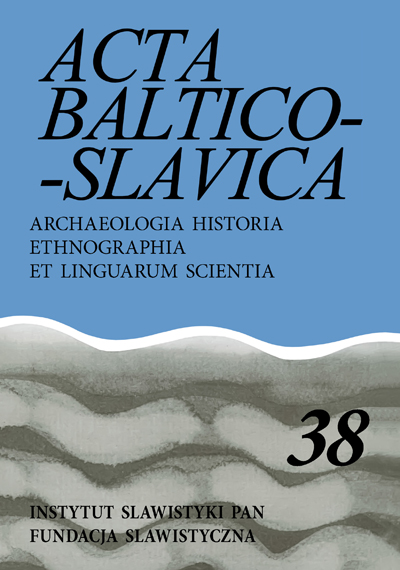Napisy nagrobne w Rzeżycy i Krasławiu (Łotwa) jako przykład koegzystencji kultur i języków w Łatgalii
Tomb inscriptions in Rēzekne and Kraslava (Latvia) as an example of co-existence of cultures and languages in Latgale
Author(s): Małgorzata OstrówkaSubject(s): Language and Literature Studies, Theoretical Linguistics, Applied Linguistics, Comparative Linguistics, Baltic Languages
Published by: Instytut Slawistyki Polskiej Akademii Nauk
Keywords: Latvia; Latgale; tomb inscriptions; the language of inscriptions; the Polish language in Latgale
Summary/Abstract: The article presents structural and linguistic analysis of tomb inscriptions in two cemeteries in Latgale, Latvia – in Rēzekne and Kraslava. Five types of inscriptions are presented: nominative-identifying, locating-identifying, inscriptions with eschatological expressions, inscriptions with an invocation to the deceased and inscriptions on symbolic tombs. The Polish tombs do not differ from Latvian ones. Sometimes it is difficult to define the nationality of the person buried in a given grave, e.g. when the surname has a Polish ending (Lipowski) and the inscription is in Latvian. The article mentions a few traces of the influence of the Orthodox culture, represented by high fences made of metal surrounding the grave. The linguistic analysis showed similarity of the inscriptions from Latvia to those from Lithuania and Belarus. It can be confirmed by the presence of such features of the North Borderland as akanye, ukanye, reduction e > i/y, soft pronunciation of conso¬nants l’, č’, d’, t’, r’. One can also observe the influence of the neighbouring languages, Russian and Latvian, on the Polish language, i.e. mixing letters and their functions. The similarity can be noticed in the form of graves – they are earth graves with a tombstone at the head including identifying data, religious symbols and portraits of the deceased.
Journal: Acta Baltico Slavica
- Issue Year: 2014
- Issue No: 38
- Page Range: 40-66
- Page Count: 27
- Language: Polish

